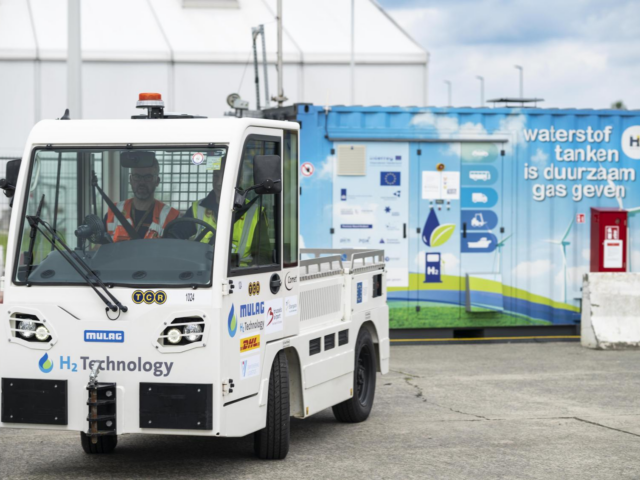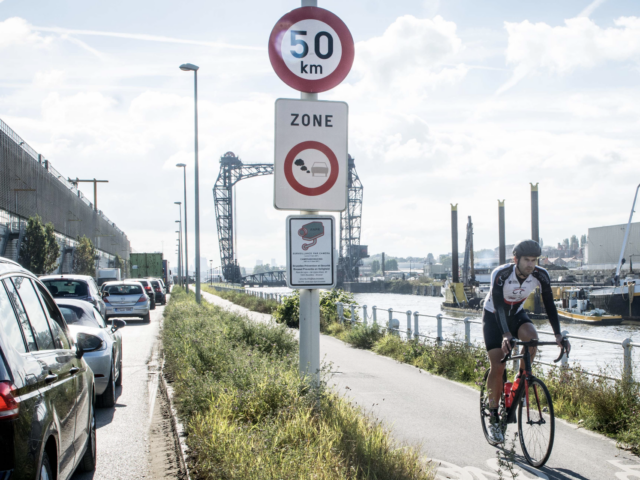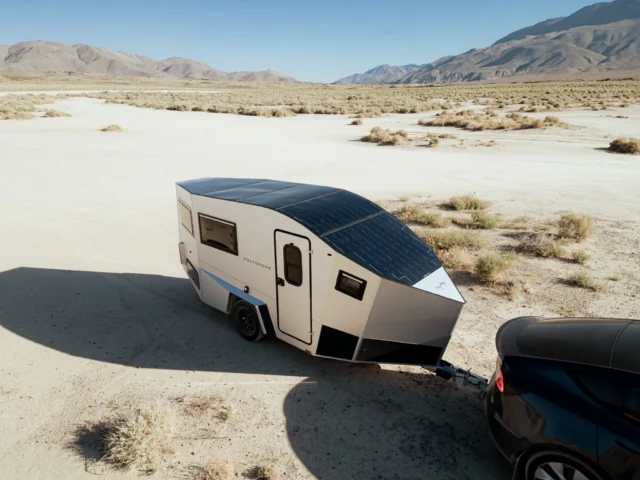Dutch Technical University TUDelft students claim the world’s first prototype of a hyperloop pod changing lanes at high speed. They built a 42-meter reduced-sized test track at the university campus for their Helios III pod. A key innovation is a functional lane switch, including a curved branch and a straight section for braking.
Theoretically, a hyperloop would move pods with up to 28 passengers or freight at speeds up to 1,080 km/h through vacuum tubes, using magnetic levitation like existing maglev trains in Germany or China do today.
The hyperloop advocates claim it would be 75% faster than a high-speed train today and ten times faster than a regular train. It is also incredibly energy-efficient, using only 10% of the energy needed for roads and aviation and 50% less energy than rail.
Changing groups of students
Delft Hyperloop was founded in 2016 by TU Delft students. It is a non-profit organization dedicated to developing a climate-neutral, scalable hyperloop system that will become a fifth mode of transportation by reaching speeds over 1,000 km/h. This is the eighth generation of changing groups of students that dedicate a year of their studies to this research.
The previous teams of Delft Hyperloop laid the foundation that allowed the eighth team to realize a lane switch, they explain on their website. “A lane switch sounds simple but is very complicated for a hyperloop system.”
Sweating like a human
“To execute an effective lane switch, many factors must be considered, such as the balance of forces acting on the vehicle. It’s important to carefully plan how powerful the magnets on the left or right side of the vehicle must be to steer it correctly, as well as with the centrifugal force, which depends on how fast the vehicle goes through the switch.”
The Helios III pod developed for this has a custom motor drive and a water-based thermal management system designed by last year’s team. The prototype that moves and levitates on the track produces a lot of heat in the near vacuum tubes. The team set up an evaporating water cooling system that utilizes the lower boiling point of water in a vacuum. The generated heat is stored in the water and is then released in the hyperloop tube, similar to how humans sweat. “This solution seems simple but is crucial for protecting their most complex systems,” they explain.
Commercial hyperloop system
TUDelft is a European forerunner in developing a hyperloop system, once imagined and proposed by Tesla’s Elon Musk, who set up the SpaceX Hyperloop Competition for student teams to work on the idea without developing it further through one of his many companies.
Out of this Delft Hyperloop non-profit organization, a number of students started a commercial project called Hardt Hyperloop. Already in 2019, Hardt showed Europe’s first fully operational hyperloop system in a 30-meter-long’ low-speed’ test tunnel in Delft.
420-meter test tube
They completed the design of a ‘switching system’ allowing the passenger pod to join the ‘main track’ or switch lanes in similar ways cars are entering or leaving the highway today. This Hyperloop Lane Switch (HLS) technology has no moving components. It ‘pulls’ the high-speed pod to one side of the guiding rails that keep the pod centered in the nearly-vacuum tube.
At the end of March 2024, Hardt’s European Hyperloop Center (EHC) in Groningen announced the completion of its hyperloop test infrastructure and opened for the first tests. This facility, featuring a 420-meter hyperloop test tube, can demonstrate all essential hyperloop technologies, including a full lane switch.




Comments
Ready to join the conversation?
You must be an active subscriber to leave a comment.
Subscribe Today